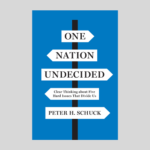When Donald Trump first stepped into the political arena, many saw his entry as little more than yet another way to raise his public profile profile and get his face in front of more cameras. As time went on, however, and other Republican presidential candidates began to drop out of the presidential race left and right, those who may not have initially considered Trump a serious contender for the highest office in the land were forced to reconsider.
With only one candidate now standing in the way of Trump’s journey to the White House, those on both sides of the political spectrum have begun questioning how he could gain such significant ground in the first place. Was it the false promises the nation’s elites made to middle-class Americans that ultimately led to the rise of Trump, or was it his ability to appeal to a particularly disenchanted facet of the American public?
The Debaters
The IQ2US panelists debating for the motion were Timothy Carney, a senior political columnist for the Washington Examiner and a visiting fellow with the American Enterprise Institute, and Ben Domenech, the publisher of Th Federalist and the host of Th Federalist Radio Hour. Debating against the motion were Jennifer Rubin, author of The Washington Post’s “Right Turn” blog, and Bret Stephens, editorial page deputy editor and “Global View” columnist for The Wall Street Journal.
The Research
Proponents for the motion argued that part of what allowed Trump to gain so much momentum in the first place was the fact that much of the American public is largely distrustful of the nation’s elites. They noted that economic downturns and scandals such as Watergate are partly to blame for Americans’ misgivings, and that this disenchanted population was quick to embrace Trump because he personified success despite his willingness to defy those considered elites. Proponents also referenced Trump’s tendency toward blaming others, such as immigrants, for the problems of all Americans, thus shifting any blame and personal accountability for one’s failings to other groups.
Opponents of the motion argued that it was not, in fact, the elites who were to blame for the forward momentum of Trump, but rather, the voters, some popular political talking heads and those who were unable to beat him in the Republican primary. Regardless of what type of misinformation is out there and easily available to voters, opponents to the motion said, it is up to each voter to educate his or herself before blinding following the lead of those involved with Trump’s campaign or that of other well-known political names and pundits. Furthermore, opponents noted that divisiveness among Republicans is also partially to blame for paving the way for Trump, as are general feelings of distrust and disenchantment among the American public, which the far right helped perpetuate.
Pre-Debate Poll Results
Prior to the debate, 32 percent of audience members voted for the motion, 27 percent voted against it and 41 percent were undecided.
Post-Debate Poll Results
After the debate, 58 percent of audience members were for the motion, 34 percent were against it and 8 percent remained undecided.



